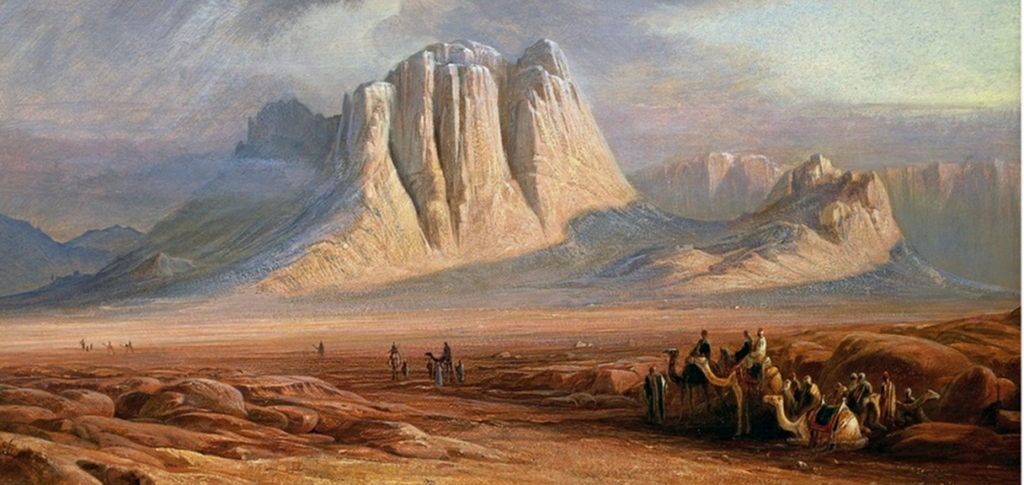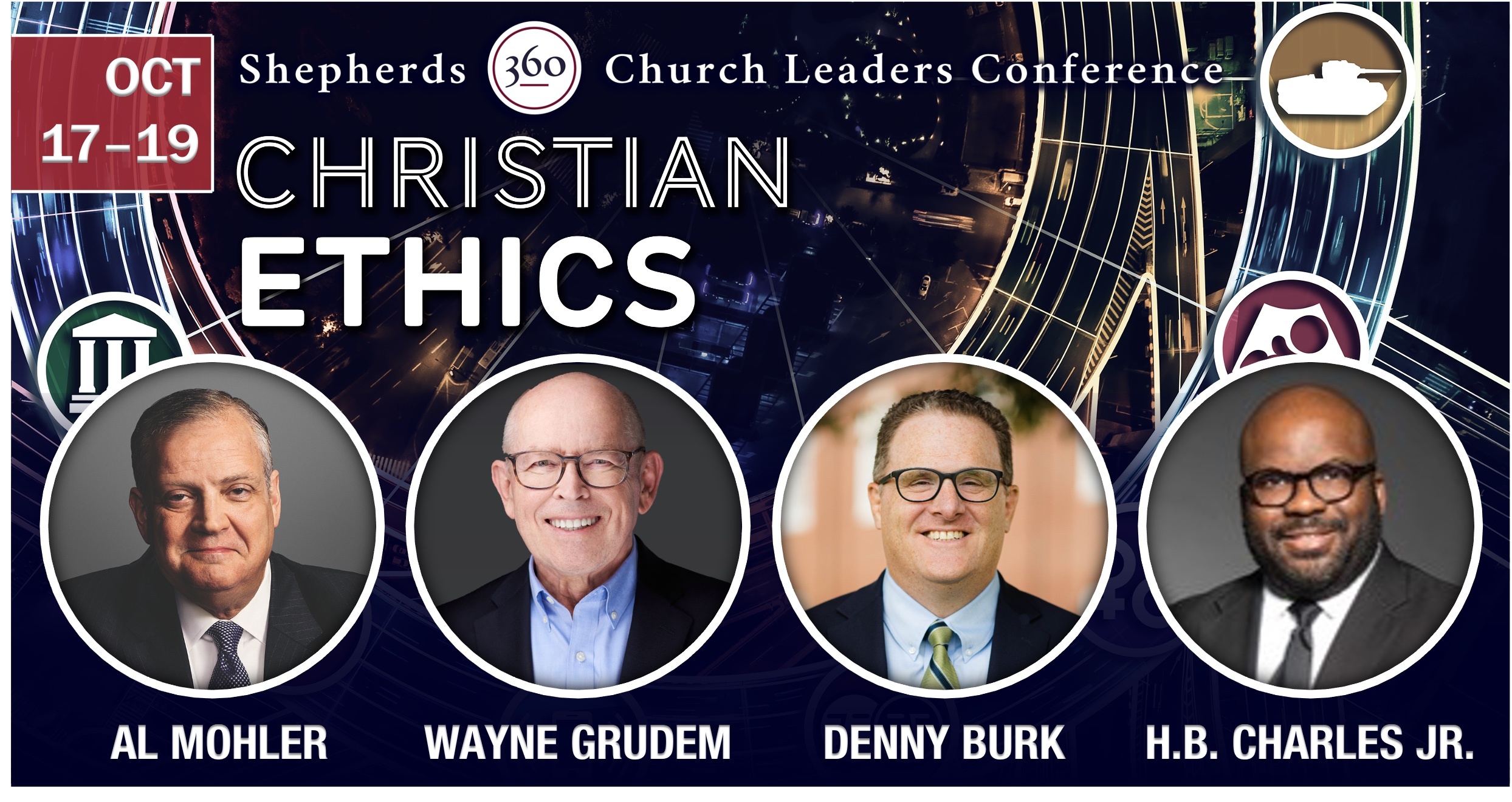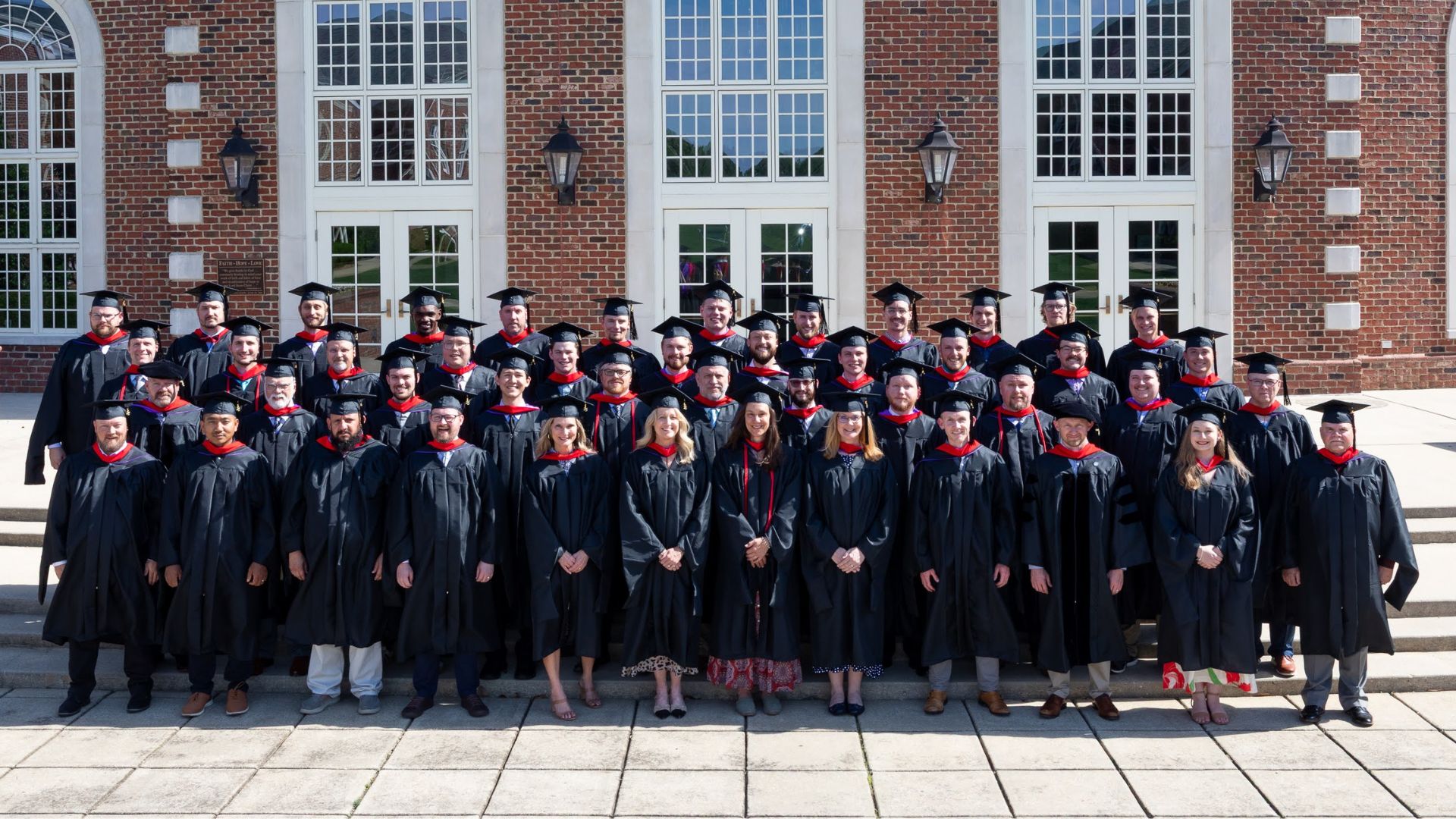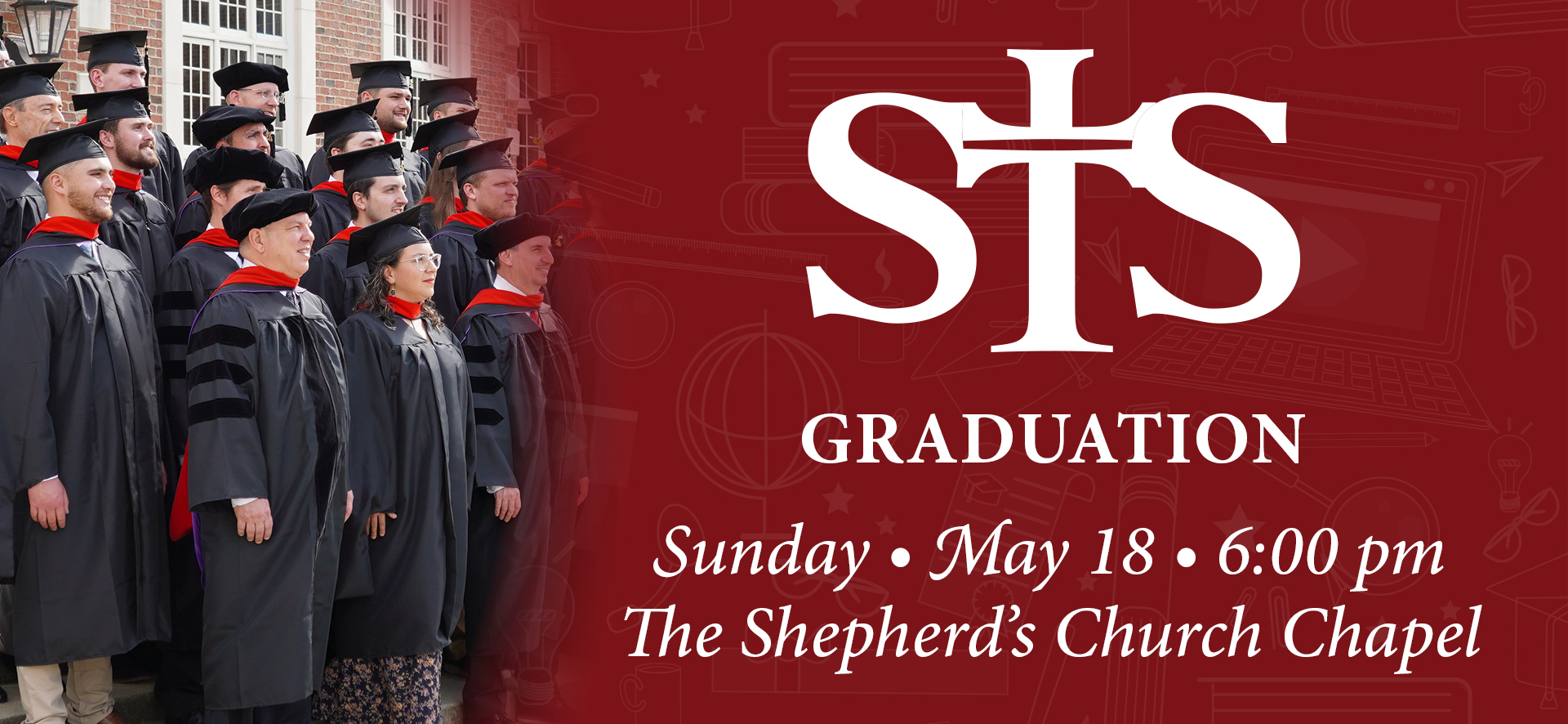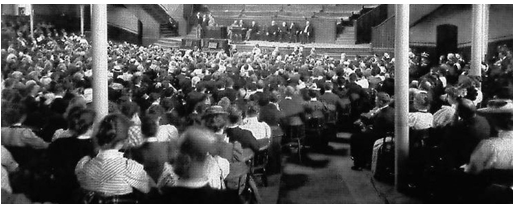How good is your word? A contract may be defined as an agreement that is intended to be enforceable by law. This is why such agreements are often described as being “legally binding.” Contracts may be written or spoken. Yet, as many of us have learned the hard way, an oral agreement is only as good as the word and character of the person making it. Rather than just taking someone at their word, experience has taught us that good contracts make good relationships.
The same was true in the ancient world, serious agreements were often made in the form of covenants and treaties. In fact, covenants went beyond the dutiful business of legal contracts to establish lasting relationships between the parties.1 Covenants are such a prominent theme in the Bible that they shape much of what we know about ancient Israelite and later Jewish cultures. These biblical covenants could also be written or spoken, and they often had symbolic acts or signs associated with them (e.g., a procession of the agreeing parties, a sacrifice with some type of blood ritual, an official pronouncement or statement, a fellowship meal, etc.).2 Rabbi Kaufmann Kohler, President of Hebrew Union College from 1903–1921, explained as follows:
Judaism has one specific term for religion, representing the moral relation between God and man, namely, Berith, covenant. The covenant was concluded by God with the patriarchs and with Israel by means of sacrificial blood, according to the primitive custom by which tribes or individuals became “blood brothers,” when they were both sprinkled with the sacrificial blood or both drank of it.3
Thus, covenants were not normally “made” as if by the mere statement of a promise. The Hebrew verb for “making” a covenant is more literally translated “cutting” in reference to the sacrificial animal(s) whose portions attended the ceremonial establishing of the relationship and were roasted to be enjoyed as part of a fellowship meal.
What Is a Covenant?
Psalm 50:5 records the divine invitation, “Gather My godly ones to Me, those who have made a covenant with Me by sacrifice.” A covenant, in the biblical sense, focuses on establishing a relationship between agreeing parties. The word Bĕrît word occurs over 280 times in the Hebrew Bible and describes the many contexts in which relational compacts are recorded in Scripture.
Covenants between human parties include a covenant of friendship, with an implication of obligation and perhaps even sanction (1 Sam 18:3; 20:8); treaties or agreements of parity between rulers or powerful individuals (Gen 21:27; 26:28; 31:44; 1 Kgs 5:12 [26]; 15:19; 2 Kgs 11:4); treaties or agreements in which the more powerful party sets the terms (Exod 23:32; Deut 7:2; Judg 2:2; Josh 9:15; 1 Sam 11:1; Ezek 17:13–18; Jer 34:8) or where the weaker party seeks terms (1 Kgs 20:34; Hos 12:1 [2]); and marriage (Mal 2:14; cf. Ezek 16:8).4
These human relational compacts provide a vivid metaphorical basis for understanding the divine-human relationship both on the individual and national level with specific people as well as with the nation of Israel as a whole.
The prophet Hosea employed covenant language when lamenting the nation’s unfaithfulness to God as illustrated by the broken and painful relationship with his own unfaithful wife Gomer who went after others outside the relational bounds of their marriage covenant but was promised to be eventually wooed back to faithfulness and redeemed. Similarly, the prophet Malachi conveyed the heavy burden of God’s faithful love to Israel despite relational disloyalty, betrayal, and treachery (Mal 1–2). The lamentable scenario plays itself out in the personal and public levels time after time where one’s word is not honored and one’s covenant is broken. Such is the pain and sorrow of unkept promises that the book of Proverbs warns the naïve that wisdom is needed in human relationships to preserve us from “the man who speaks perverse things” (2:12) and from “the seductress who flatters with her words, who forsakes the companion of her youth, and forgets the covenant of her God” (2:15-16).
No one wants the misery of broken promises and misplaced trust so covenants helped to ensure both the seriousness of the commitment and the safety of the relationship being made. The documenting of these expectations helped to bind people to their word. And throughout Scripture, God employed the sincerity and solemnity of covenant making to communicate His own commitments. He often established these commitments on mountaintops to memorialize that He would be loyal to all that He promised. Just as the mountains are trustworthy landmarks that can be observed from generation to generation (Heb. L’dor v’dor), the Lord promised that His covenant love was even more steadfast:
“For the mountains shall depart
And the hills be removed,
But My kindness shall not depart from you,
Nor shall My covenant of peace be removed,”
Says the LORD, who has mercy on you. (Isa 54:10)
Similar to the many suzerainty-vassal treaties of the ancient Near Eastern world, in which the suzerain (master) king initiated a covenant with his inferior vassal (servant) king, God initiated relationships with the patriarchs and leaders of the nation of Israel. Obviously, these covenants were not made between parties who were of equal authority (e.g., God and His creation after the flood, God and Abraham, God and Moses and the nation of Israel, God and King David, and God and a redeemed house of Israel and Judah after the exile). Yet, despite the imbalanced authority of the covenant initiator and covenant recipient, certain signs were established to assure the inferior of the superior’s intentional faithfulness to the covenant relationship. Though there are many covenants and treaties recorded in Scripture, the major biblical covenants and their mediators all had specific signs associated with them: Noah and the rainbow, Abraham and circumcision, Moses and the Sabbath, and David and his dynasty—and each covenant was made in relationship to mountains which became significant in the biblical narrative.
Mount Ararat, Noah, and the Sign of the Rainbow
The first use of the term “covenant” in the Bible is found in reference to Noah and his family—and ultimately with all that have breath.
“And behold, I Myself am bringing floodwaters on the earth, to destroy from under heaven all flesh in which is the breath of life; everything that is on the earth shall die. But I will establish My covenant with you; and you shall go into the ark—you, your sons, your wife, and your sons’ wives with you.” (Gen 6:17–18)
It is used again twice after Noah’s family emerged from the ark on Mt. Ararat.
“And as for Me, behold, I establish My covenant with you and with your descendants after you, and with every living creature that is with you: the birds, the cattle, and every beast of the earth with you, of all that go out of the ark, every beast of the earth. Thus I establish My covenant with you: Never again shall all flesh be cut off by the waters of the flood; never again shall there be a flood to destroy the earth.” (Gen 9:9–11)
For anyone who has viewed the snow-capped peaks of tall mountain ranges in the summertime or hiked in high altitudes where the air becomes thin, it is possible to imagine the elevation of Mt. Ararat where Noah and his family found themselves after the flood waters began to recede. The majestic summits of the Colorado Rockies are often categorized as “fourteeners” at over 14,000 feet. The highest peak of the Alps is Mont Blanc along the French-Italian border at 15,778 feet. But the peak of Agri Dagh near Lake Van in modern-day Turkey is 17,000 feet—and this is the likely location of the biblical Mt. Ararat.5 The area is so remote that it was known as a place where fugitives would flee from justice in ancient times (2 Kgs 19:37; Isa 37:38). And it was here that Noah found grace in the eyes of the LORD and where the Lord provided the rainbow as the sign of his covenant: “I set My rainbow in the cloud, and it shall be for the sign of the covenant between Me and the earth.” (Gen 9:13) “And God said to Noah, ‘This is the sign of the covenant which I have established between Me and all flesh that is on the earth.’” (Gen 9:17)
Mount Moriah, Abraham, and the Sign of Circumcision
The second major covenant in the biblical storyline is also associated with an important mountain. As with the account of Noah’s Ararat, the mountain is named toward the end of the covenant narrative. Abram, a descendant of Noah’s son Shem (Gen 11:10–26) who had already received his father’s blessing (Gen 9:26), soon became the focal point of God’s purpose to establish covenant relations. He is promised land, seed, and blessing (Gen 12:1-3),6 and though he believed God, he also asked for assurance of these promises—a request that God granted by establishing a covenant. “On the same day the LORD made a covenant with Abram, saying: ‘To your descendants I have given this land . . .’” (Gen 15:18) Since the account clearly indicates that God made this covenant after causing a deep sleep to fall upon him so that only the Lord Himself proceeded through the pieces of sacrificed animals, the text is intentionally indicating the unilateral and unconditional nature of the Abrahamic covenant . . . yet with a command at the outset: “Be a blessing!” As one author summarized, “Abraham and his line bear covenant regulations but not covenant obligations.”7 It was the LORD who obligated Himself to bring about all that He promised to this patriarch.
As the account of their relationship continues, the LORD called Abram (Heb. exalted father) by the new name Abraham (Heb. father of a multitude) to further signify His covenant intensions to bless him with descendants. Although circumcision was already a practice known among the ancient Egyptians, Abraham was given this rite as a sign to even further remind him of God’s intension to bless him and his descendants after him by becoming a great nation (Gen 17:9–14). As the last great test of Abraham’s obedience and faith, God called him to sacrifice that which was correctly to be understood as Abraham’s greatest blessing—his only son, Isaac (Gen 22). In the equally dramatic and ironic account of the binding of Isaac and Abraham’s willingness to sacrifice his only son, Abraham assures Isaac who dutifully followed his father up the mountain with fire and a knife but without a sacrificial animal that “God will provide for Himself the lamb for a burnt offering” (Gen 22:8). Moriah means “The LORD will provide,” and that is exactly what He did.
The Abrahamic covenant provides the basis for the later biblical covenants that God made as He provided additional details about how He would fulfill His promises to Abraham of land, seed, and blessing through the Mosaic, Davidic, and New covenants respectively. Mount Moriah later became the resting place for God’s earthly temple under David’s son Solomon (2 Chron 6–7), and the place to which the tribes went up to worship the LORD (Ps 122:4). The covenants were likely reviewed atop Mount Moriah at each of the three annual pilgrim festivals (Pesach/Passover, Shavuot/Weeks/Pentecost, and Sukkot/Tabernacles).8
Mount Sinai, Moses, and the Sign of the Sabbath
Out of His faithfulness to His covenant with Abraham, God purposed to bless Abraham’s offspring through Isaac and Jacob. Jacob’s name was changed to Israel, and his descendants came to be known as the twelve tribes of Israel or collectively as the children of Israel. God told Jacob not to fear going down to Egypt during the time of the famine in the land of Canaan, “for I will make of you a great nation there” (Gen 46:3). Though their sojourn in Egypt lasted 430 years, God used the centuries to produce from this family the great nation He had promised. And at the right time, He summoned Moses to bring the Israelites out of Egypt through the Exodus—you can read the book, and then see the movie!
It was at Mount Sinai that God established His covenant with the nation. While there has been some debate and speculation over the location of Mount Sinai, the wilderness wandering itinerary (Num 33) comports well with the southern Sinai known as Jebel Musa—Arabic for Mountain of Moses. Here, the people plead with Moses to be their representative or covenant mediator in ascending the Mountain to meet with the LORD. At Sinai, God provided the nation with His laws and instructions for building the tabernacle as a portable worship center that would house the ark of the covenant in which would be placed the stone tablets of the Ten Commandments. This instruction (Heb. Torah) provided the Israelites the guidance they would need in order to live in covenant faithfulness in the Promised Land. In fact, the structure of the covenant narrative at Sinai (Ex 19:3-40:38) and later covenant renewal ceremonies on the plains of Moab (Deut 30) and at Mounts Ebal and Gerizim (Josh 24) parallel the features of other ancient Near Eastern treaties that also established nations under the rule of their kings.9 Clearly, God was establishing a nation at Mount Sinai. And there He pronounced that the Sabbath—the seventh day of the week—would be a perpetual sign so that Israel would be reminded that the LORD is the one setting them apart (sanctifying them) for His purposes. This weekly celebration was intended to be a call to adhere to the Sinai covenant.
And the LORD spoke to Moses, saying, “Speak also to the children of Israel, saying: ‘Surely My Sabbaths you shall keep, for it is a sign between Me and you throughout your generations, that you may know that I am the LORD who sanctifies you. . . . Therefore the children of Israel shall keep the Sabbath, to observe the Sabbath throughout their generations as a perpetual covenant. It is a sign between Me and the children of Israel forever; for in six days the LORD made the heavens and the earth, and on the seventh day He rested and was refreshed.’” (Ex 31:12-17)
Mount Zion, David, and the Sign of a Royal Line
The ark was built under the direction of Moses in connection with the covenant at Sinai, and it was David who took the ark from Kiriath Jearim up to the Jebusite capital atop Mount Zion in Jerusalem. To be clear, this is not the site of the Western Hill that is often visited today by pilgrims and identified as Mount Zion. As geographer Todd Bolen explains, “Archaeological evidence has shown that this hill was only incorporated within the city’s fortifications in the 8th century BC, but the name has stuck. The Hinnom Valley borders this hill on its western and southern sides.”10 This means that the location of Mount Zion in biblical times was synonymous with the City of David. After all, that is what the text states in 2 Sam 5:7, “David took the stronghold of Zion (that is, the City of David).”
Though David was as flawed as anyone else, the LORD was impressed that David wanted to build for Him a house/temple (2 Sam 7:5-7). This occasioned a wordplay by which the LORD promised to David that He would make for David a house/dynasty—a royal line (2 Sam 7:11).11 The LORD clarified,
When your days are fulfilled and you rest with your fathers, I will set up your seed after you, who will come from your body, and I will establish his kingdom. He shall build a house for My name, and I will establish the throne of his kingdom forever. I will be his Father, and he shall be My son. If he commits iniquity, I will chasten him with the rod of men and with the blows of the sons of men. But My mercy shall not depart from him, as I took it from Saul, whom I removed from before you. And your house and your kingdom shall be established forever before you. Your throne shall be established forever. (2 Sam 7:12-16)
Hebrew University professor Moshe Weinfeld distinguished two types of ancient covenants: 1) the royal grant style of treaty in which a suzerain (master) obligates himself to the vassal (servant); and 2) the more typical bilateral political treaty of the day that obligated both parties.12 While these treaty styles are similar in form and content like predictable modern boilerplate legalese, it is possible to differentiate between the two styles when reading the biblical accounts of famous covenants made with such figures as Abraham, Moses, and David. The mutually obligatory type covenant describes the expectations of God’s relationship with the nation as reflected in the Sinai covenant through Moses whereas the royal grant or promissory type covenant was seen as a gift that granted blessings to Abraham and David based upon their loyal service to their divine Master and King. Of such individuals to whom gifts of land and dynasty were promised, royal grants spoke of their proven faithfulness and pledged God’s unconditional favor—despite their imperfect loyalty and weak faith.
In Genesis 26, the blessings promised to Abraham are reiterated to Isaac:
And I will make your descendants multiply as the stars of heaven; I will give to your descendants all these lands; and in your seed all the nations of the earth shall be blessed; because Abraham obeyed My voice and kept My charge, My commandments, My statutes, and My laws. (Gen. 26:4-5)
In 1 Kings 3, the blessings promised to David are similarly recalled by David’s son Solomon:
And Solomon said: “You have shown great mercy to Your servant David my father, because he walked before You in truth, in righteousness, and in uprightness of heart with You; You have continued this great kindness for him, and You have given him a son to sit on his throne, as it is this day. (1 Kgs. 3:6)
Clearly, God was promising blessings to Abraham and David—and to their descendants after them. And even though the loyalty and faith of their descendants was also often imperfect and weak, the pledge of land and dynasty continued on the basis of the royal grant God promised as gifts. His word, after all, is quite good according to the Bible.
The New Covenant, Its Promised Messiah, and Future Zion
The prophet Jeremiah had an unpopular message to deliver to unappreciative recipients. He prophesied during the reigns of five different Judahite kings both prior to, during, and after Nebuchadnezzar’s invasion of Jerusalem—predicting the destruction of the temple and the exile of the people to Babylon. But he also conveyed God’s promise of a new covenant despite Israel’s unfaithfulness to the Mosaic covenant.13
Behold, the days are coming, says the LORD, when I will make a new covenant with the house of Israel and with the house of Judah—not according to the covenant that I made with their fathers in the day that I took them by the hand to lead them out of the land of Egypt, My covenant which they broke, though I was a husband to them, says the LORD. But this is the covenant that I will make with the house of Israel after those days, says the LORD: I will put My law in their minds, and write it on their hearts; and I will be their God, and they shall be My people. No more shall every man teach his neighbor, and every man his brother, saying, “Know the LORD,” for they all shall know Me, from the least of them to the greatest of them, says the LORD. For I will forgive their iniquity, and their sin I will remember no more. (Jer 31:31-34)
Jesus is introduced in the New Testament (the New Covenant Scriptures) as a descendant of Abraham who will bring Abraham’s blessings to the whole world, He is the faithful Israelite who obeyed the Torah God gave to Moses, He is the rightful king in David’s line, and He offers the blessings of the New Covenant to all who will trust in Him. He is associated with Zion and the expanding nature of Zion language in the Bible. Zion was in the City of David, an outcropping. Then as space was needed for the construction of Solomon’s temple, Jerusalem expanded to the north, and what had been known as Mount Moriah came to be also associated with Zion. Soon all the land of Israel, which was ruled from Zion, came to be associated with Zion. The prophets predict a future time when Jerusalem will be exalted above the highest hills with topographical, hydrological, and climatic changes (Mic 4:1-2; Isa 2:2-3; 60:10-14; Ezek 47).
One Final Mountain . . .
The signaling event for this transformation will be the Messiah’s descent when his feet will stand on the Mount of Olives (Zech 14).14 As we flip the pages on our calendars and consider the events planned for the future, we are encouraged to consider where we will be on that day when Messiah’s feet will stand on the Mount of Olives. If you are in covenant relationship with Him, if you have been sprinkled by His blood, if you are trusting in His offering that forms a covenant of peace with those who call on Him, you can know the answer today. Where will your feet stand when His feet stand on the Mount of Olives?
When it comes to answering such an important question—a question about eternal destiny—don’t take my word for it, take it from the Lord Himself! Today He invites people from Israel and from all the families of the earth to enter into a covenant relationship with Him. He invites those who are near and those who are far off to enter His New Covenant blessings through the provision He has made. Search the Scriptures, and they will encourage you to know His promised Messiah, to call upon the name of the Lord so you can be saved.
And it shall come to pass
That whoever calls on the name of the LORD
Shall be saved.
For in Mount Zion and in Jerusalem there shall be deliverance,
As the LORD has said,
Among the remnant whom the LORD calls. (Joel 2:32)
This article originally appeared as the featured article on the September 2020 – December 2021 calendar published by CJF Ministries / Messianic Perspectives. Used by permission. Many other helpful archived articles are available at www.cjfm.org.
END NOTES
1 Gene M. Tucker, “Covenant Forms and Contract Forms,” Vetus Testamentum 15 (1965): 500.
2 Manahem Haran, “The Bĕrît ‘Covenant’: Its Nature and Ceremonial Background,” in Tehillat le-Moshe: Biblical and Judaic Studies in Honor of Moshe Greenberg, eds. Mordechai Cogan, et al. (Winona Lake, IN: Eisenbrauns, 1997), 203-219.
3 Kaufmann Kohler, Jewish Theology: Systematically and Historically Considered (New York: Macmillan, 1928), 48.
4 J. Gordon McConville, “tyîrV;b 1382,” NIDOTTE 1:748.
5 For an account of recent excavation attempts, see https://www.worldofthebible.com/product/finding-noah-dvd/.
6 T. Desmond Alexander, “Genesis 12:1–3; 22:16–18 The Covenant with Abraham,” The Moody Handbook of Messianic Prophecy (Michael Rydelnik and Edwin Blum, eds.; Chicago: Moody Publishers, 2019), 259-270.
7 David Andrew Dean, “Covenant, Conditionality, and Consequence: New Terminology and A Case Study in the Abrahamic Covenant,” JETS 57/2 (2014): 281–308. See his conclusion on the narrative design within the various chapters in Genesis and what was happening with Abraham and the covenant.
8 D. Hillers. Covenant: The History of a Biblical Idea. Baltimore: Johns Hopkins University Press, 1969.
9 See Victor H. Matthews, Old Testament Themes (St. Louis: Chalice Press, 2000), 7-38; Richard E. Averbeck, “Law,” in Cracking Old Testament Codes: A Guide to Interpreting the Literary Genres of the Old Testament (Nashville: Broadman & Holman, 1995), 116-119; Jeffrey J. Niehaus, Ancient Near Eastern Themes in Biblical Theology (Grand Rapids: Kregel, 2008), 56-82.
10 See https://www.bibleplaces.com/mtzion/.
11 See Walter C. Kaiser Jr. “2 Samuel 7: The Davidic Covenant (I),” The Moody Handbook of Messianic Prophecy, 385-397; Eugene H. Merrill, “1 Chronicles 17: The Davidic Covenant (II),” The Moody Handbook of Messianic Prophecy, 425-435.
12 Moshe Weinfeld, “The Covenant of Grant in the Old Testament and in the Ancient Near East,” Journal of the American Oriental Society 90.2 (1970): 184-203.
13 Josh Matthews, “Jeremiah 31:31–34: The New Covenant,” The Moody Handbook of Messianic Prophecy, 1035-1047.
14 Eugene H. Merrill, “Zechariah 14:1–11: The Return of the Messiah,” The Moody Handbook of Messianic Prophecy, 1315-1325.
